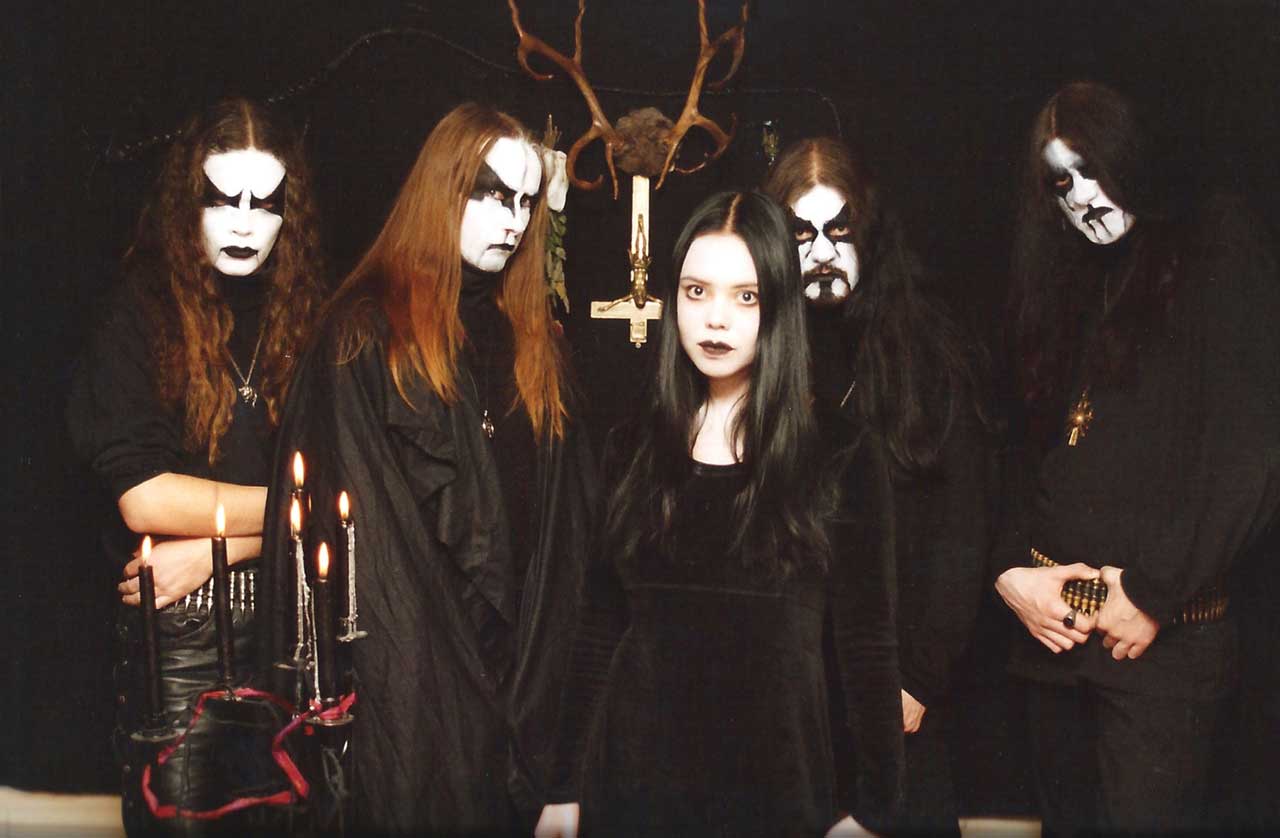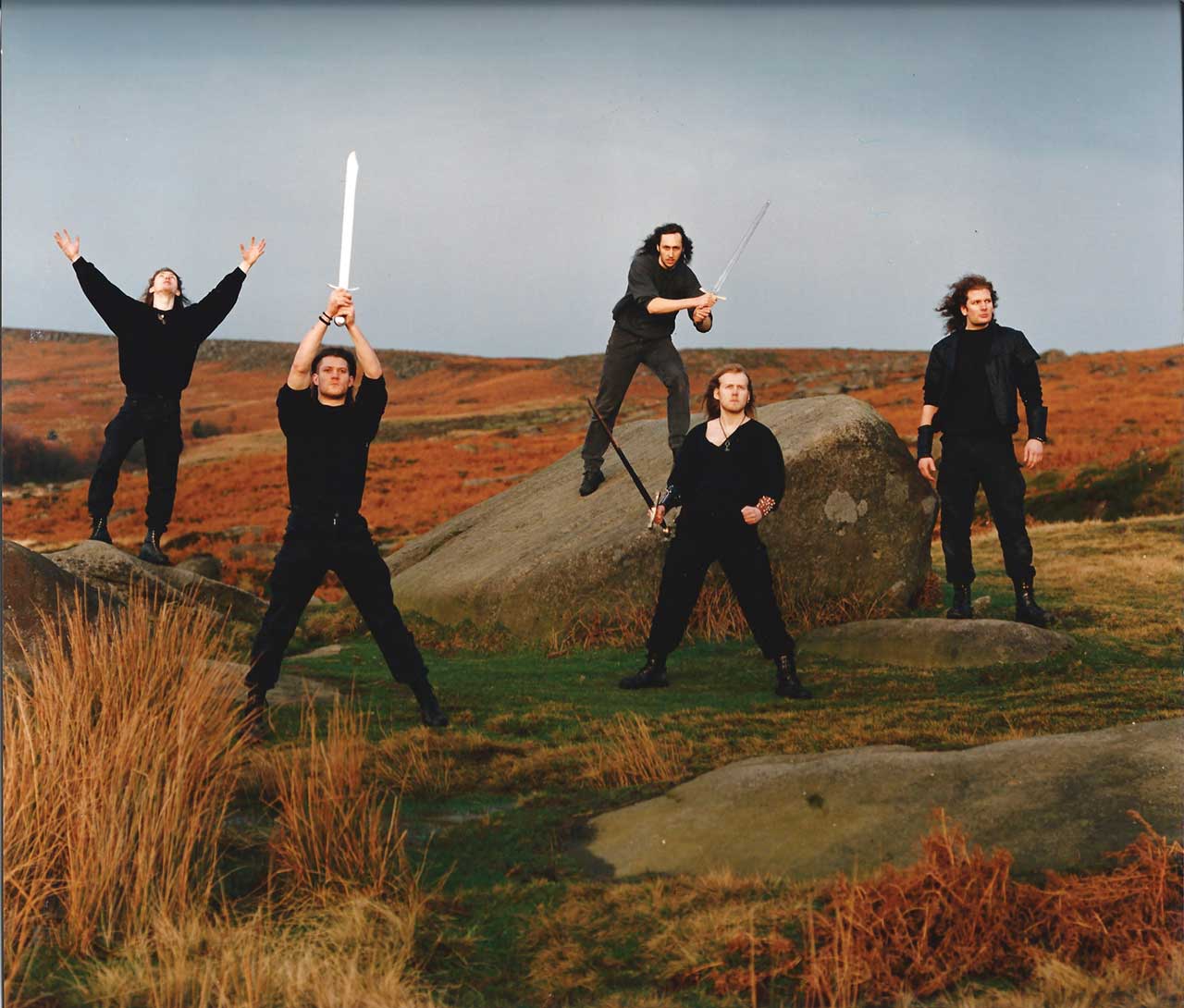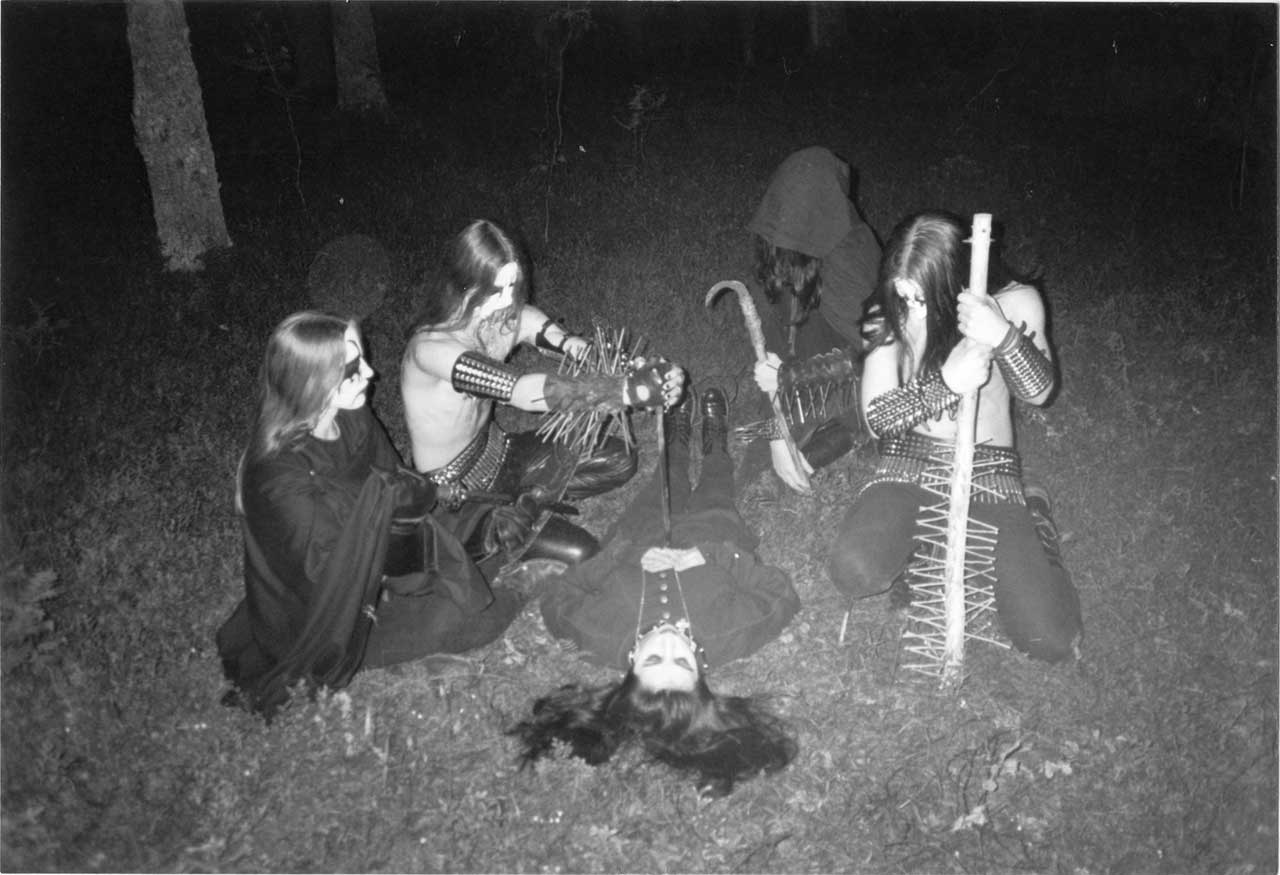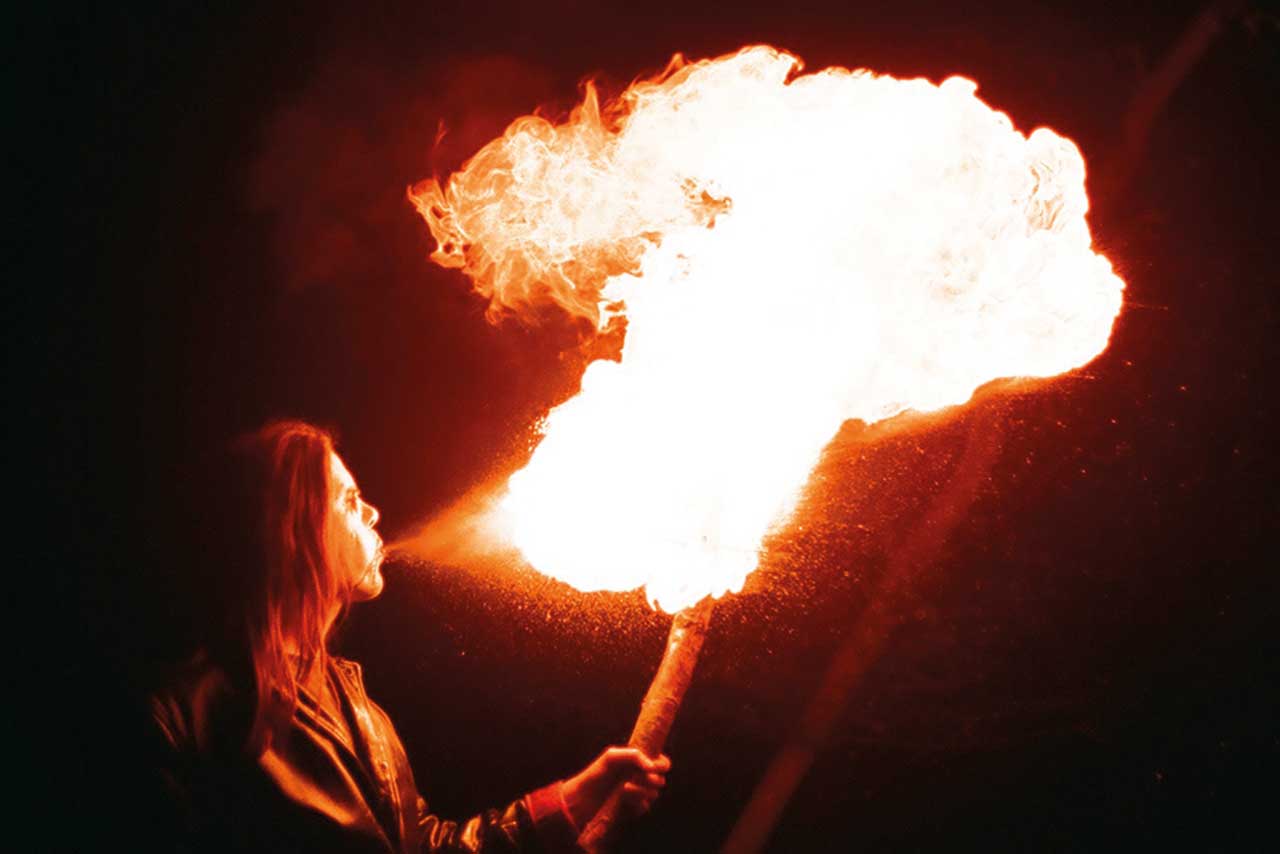How Cacophonous Records changed extreme music
Having brought the likes of Cradle and Dimmu to an unsuspecting world, Cacophonous Records’ history is entwined with the birth of black metal. Can their resurrection herald a new, dark dawn?

In an era when there are almost as many record labels as there are bands making records, it’s easy to forget that there was a time when labels were fewer and further between, not least in the world of extreme metal. Back in the 80s and 90s, being signed became a genuine status symbol not least because, pre-internet, having a label behind you was often the only way to get your releases into the hands of fans and your music into the ears of potential listeners. No Bandcamp, YouTube, Spotify or Facebook back then – hell, we didn’t even have MySpace.
It was against such a background that the explosion of second wave black metal took place and almost all the key releases of the 90s were scattered over just a handful of labels: Osmose, Candlelight, Deathlike Silence, Fullmoon, Misanthropy, Merciless, No Fashion and, of course, Cacophonous Records, who helped launch the likes of Cradle Of Filth, Dimmu Borgir, Bal-Sagoth, Gehenna, Primordial and Sigh.

Now, after more than a decade’s silence, Cacophonous is returning from the abyss, with its shadowy founder Frater Nihil once more at the helm. This year is set to see a slew of new releases, not only archive material but fresh recordings by completely new signings including The King Is Blind and The Infernal Sea. But before we look to the future we must venture into the dark past, to understand just why the label was so important…
The roots of Cacophonous are actually embedded in another iconic UK label, Vinyl Solution. Growing from the Portobello Road record store of the same name, it offered a diverse roster from the worlds of techno, hip hop and hardcore punk, alongside significant thrash and death metal bands such as Cancer, Macabre, Cerebral Fix and Bolt Thrower.
Initially folding lyric sheets in exchange for a few records, before eventually taking over the mail order, Frater Nihil – then known simply as Neil Harding – was pretty well-versed in the business by the time he was offered a position overseeing the label. Almost immediately he set about to separate its metal component and turn it into a new self-contained label; Cacophonous was born.
The plan at first was to just release seven-inch records and this is what he did, showcasing underground acts such as Sigh, Kawir, Psychic Pawn, Megiddo and Monolith. The latter was a homegrown thrash/death metal band perhaps most notable for featuring drummer Nick Barker, a soon-to-be member of Cradle Of Filth – as it turned out, it was a crossing of paths with Cradle in 1993, and their induction of Barker, that would set the course for both parties.
“The band left a copy of the Total Fucking Darkness demo in the shop while I was out,” Neil recalls. “I listened to it and thought it was amazing, so I called them up the next day and we went for a beer and talked about the future. They shared a similar ideology; it was Satanic music as I saw it and I thought it would fit very well into what I wanted to do with the label. Cradle were the first band that you listened to and thought, ‘This is the future,’ and really everything sprang from that. It was like, ‘OK, this is the band everyone should hear.’”
Sign up below to get the latest from Metal Hammer, plus exclusive special offers, direct to your inbox!
“I knew about the store at Portobello because I worked at my granddad’s flower shop in London every Christmas,” remembers Dani. “At lunchtime they’d say, ‘Go for lunch, here’s 20 quid,’ and I’d jump on a train, and come back with all these records saying, ‘Oh, that was delicious.’
“Principle… was originally going to be a seven-inch,” he continues. “We’d been on tour with Cancer and Nick was their drum tech. He came down to produce the EP and in the course of one day he went on to become the drummer and the EP became an album. It all happened very quickly, which was very exciting for a young band.”
Released early in 1994 with the memorable title The Principle Of Evil Made Flesh and the historic catalogue number NIHIL1, it represented Cacophonous’s most ambitious release to date, completely redefining the nature of the label in the process. Neil abandoned the seven-inch release schedule and instead concentrated on breaking Cradle. This was a much bigger task than it might sound, for while the band would ultimately sell half a million copies of the album, in the early days they were met with considerable bemusement and even active resistance. Even a 1993 UK tour with Emperor (a thing of legend today) struggled to pull attendees. “I remember at one show there were literally two people,” Dani laughs. “We ended up saying, ‘This isn’t going anywhere’ and walked off halfway through a song.”
Black metal was still a pretty unknown quantity in ’93 and in ‘94, particularly in the UK, and distributors baulked at this ballsy, corpsepainted six-piece. Many media outlets refused supportive coverage altogether due to the genre’s associations with desecration, arson, murder and totalitarian politics, and a ‘Satanic panic’ of sorts arose, with scare stories by UK tabloids and even the BBC. At one point both the group and Neil even had to sign a disclaimer distancing themselves from far-right politics in order to get distribution.
But while there were certainly elements of hysteria at work, there’s no doubt that both the band and particularly Cacophonous were intended as more than purely musical ventures. Here was an overtly Satanic record label that unapologetically took inspiration from some pretty extreme occult groups, a point largely reflected by Cradle themselves and evident in Principle…’s lyrics and artwork. Most telling of all was the final (unlisted) track, Imperium Tenebrarum – essentially a short statement of intent, spoken by Neil himself.
“You had various occult groups, people were talking about Satanic war and changing things from an occult sense,” says Neil. “There was a notion among people who listened to Satanic black metal that you were part of something greater. That’s why on Imperium Tenebrarum we’re talking about burning down temples and marching over dogma, because that’s what I really believed in and wanted to showcase with the label. And that’s partly why I championed Cradle.”

“There was a feeling that there was something revolutionary happening,” adds Dani. “It felt like the time was right. That was ’93. Metal had died a horrible death, grunge had killed the mainstream off, so it felt like a revolution. There were bands popping up all over the place, you had those famous magazines covers, the church burning, you didn’t know what was happening day to day and the seriousness of it just added to the excitement.”
A different but equally significant British band Cacophonous signed was Bal-Sagoth. Far less grave than Cradle and with fantasy literature rather than occult leanings, their blend of symphonic extreme metal and heroic atmosphere provided a musical template for future bands such as Turisas and Ensiferum, and Cacophonous would end up releasing the first half of the band’s six-album discography.
“They’ve got a very particular fanbase, but in some cases have wider appeal than Cradle,” says Neil of the Yorkshire clan. “There are more people I’ve met over the years who aren’t into metal per se who know Bal-Sagoth.”
While the albums were all larger-than-life, the band had been so disappointed by their demo that they only sent it out on request and even today vocalist Byron Roberts credits Neil’s foresight with regard to the signing.
“I sent a big letter with the tape,” he recalls, “I said, ‘If we’re ever given a decent recording budget, this is what we’d want: big symphonic keyboards, intros, extensive spoken parts. It’s basically supposed to sound very epic and orchestral.’ Neil saw the potential in those songs and offered us a three-album deal. So that was our big break because none of the other labels wanted to know.”
Irish Pagan black metallers Primordial were another early signing, the band releasing their acclaimed debut full-length Imrama in 1995. Neil was also keen to pick up some of the black metal talent coming out of Norway and, maintaining a focus on the more symphonic and ethereal side of things, he signed both Gehenna and Dimmu Borgir, the latter a tip from Emperor guitarist Samoth. Cacophonous’s release of Dimmu’s second album, Stormblåst, ultimately broke the band to a much wider audience, laying the groundwork for its follow-up, Enthrone Darkness Triumphant, which ultimately propelled them toward the mainstream.
Not all the label’s signings would prove so accessible, of course. Japanese black metallers Sigh signed to Cacophonous after the death of their former label owner, Mayhem mainman Euronymous. They then proceeded to perplex both their fanbase and their new label with a series of superb but increasingly experimental works integrating elements of jazz, rock and classical. Their acclaimed Hail Horror, Hail album even prompted the label to put a disclaimer on the back of the sleeve to explain its unusual nature to the unwary.
“When we were making Hail Horror, Hail, we seriously thought that nobody would like it,” says Sigh founder Mirai. “Neil actually came to Japan while we were recording it and frowned upon what we were doing. We were really happy to see that. When a lot of magazines ended up giving it a high score and it was ranked in the albums of the year, we were so surprised.”
Sigh might have represented the more challenging side of the scene, but in general by the mid-90s black and occult metal were becoming increasingly popular. The label’s sales reflected this, and the growth led to the recruitment of more staff, most notably one Julie Weir. “Suddenly I was selling 10,000 units instead of 1,000 units; it was making money and it wasn’t just a bedroom project anymore,” Neil explains. “That’s why Julie came in, to do the things I didn’t want to do. All I wanted to do was listen to demos, go to gigs, sign bands and sort out artwork and recordings. I didn’t want to publicise what I was doing.”

Despite (and in part perhaps because of) this rapid expansion, Cacophonous began facing a number of challenges. A falling out with Cradle over the proposed second album, _Dusk… _And Her Embrace, resulted in the group departing the label altogether and re-recording the album for Music For Nations. While their contractual compromise, 1996 opus V Empire, did prove to be the most successful Cacophonous release ever, the loss of the band was a significant blow. Some rather Cradle- esque examples of vampire-themed goth/ black metal were released by bands such as Finland’s Twilight Ophera and Germany’s Ancient Ceremony, but made little real impact. Meanwhile, other big sellers such as Dimmu Borgir and Bal-Sagoth also departed, signing contracts with Nuclear Blast. This was an awkward situation as the German label had been distributing for Cacophonous and led to a split between the two parties, one that would ultimately spell disaster for the UK label.
“We found another distributor who wanted to get into the metal market – they mainly dealt with rock and punk – and made a switch,” recalls Neil. “But they had no clue, no contacts and they didn’t have the same customer base, so instead of pre-selling 5,000 in Germany we plummeted and were selling 500. Effectively we lost our place in the market and suddenly we were being leapfrogged by lesser labels and there was no money. We weren’t getting the sales and so bands weren’t coming to us.”
The label was more or less silent between 1999 and 2002, and during these years a sister label arose, namely Visible Noise, driven by both Julie and, initially at least, Neil, who was involved with the first really successful band on the label, Lostprophets. Cacophonous would make a brief resurgence with a number of distinctly different groups between 2002 and 2004 (“I decided to try something new with blackened metal and deathcore,” says Neil, “it was a rebranding”) but the writing was on the wall and Cacophonous sank into the shadows.
A decade later and a conversation between Neil and Julie regarding the possibility of making vinyl releases of some of the back catalogue quickly ignited a spark that led to the two agreeing to bring back the label as a fully fledged operation with both reissues and new signings. And rather poetically, two decades later, Cacophonous will finally release the original, unheard recording of Dusk… And Her Embrace by Cradle of Filth, featuring a completely different lineup than the version released in 1996.

“There are only two people who had the masters, Dani and myself, so if it had ever come out beforehand it would be pretty obvious who it was,” Neil laughs. “So I was always looking for a legitimate way to put those out. I hadn’t seen Dani for five years but we always hit it off and we always lapsed back into that 90s camaraderie.”
“It was a different era of the band,” explains Dani of the unreleased album, “and that’s why it’s important it comes out. At the time we were very inspired by bands like Emperor and Immortal and this version harks more to that era than the more polished bombast of the MFN version. So it literally speaks of an era that will never be again. There were legal issues in the past but it’s been 20 years and 20 years is a long time – you get less for murder!”
While the Cradle opus is surely a huge part of the label’s arsenal for the coming year, Neil is clear that he isn’t just here to reissue old classics. And so while we can look forward to, for example, a luxurious box set of the first three Bal-Sagoth albums, complete with new artwork and liner notes, the real future for Cacophonous lies in the brand new releases that are set to emerge.
“It won’t just be for a reissue of Cradle,” concludes Neil with certainty in his voice, “it’s because I want to sign new bands, especially in the UK. I think there are a lot of talented bands in the country that need a vehicle to get themselves known. There’s so many labels these days I might as well corner a market that I know rather than start signing bands from Norway or Sweden. There are bands in the UK who are easy to work with, have an aesthetic, and are a phone call away and can play shows at short notice – why not be the vehicle for that?”
The New Noise
Introducing the two recent releases that mark the label’s return
THE KING IS BLIND
Featuring ex-members of such British outfits as Cradle Of Filth, Extreme Noise Terror, Entwined and New Model Army, The King Is Blind marry a wide array of influences to crushing effect. A concept album, debut full-length Our Father weaves a compelling story of God, Satan and man. “We settled on the tag ‘Monolithic Metal’,” smiles vocalist Steve Tovey. “We play metal music, just bigger and heavier than most! It’s a great honour to be asked to be the first release on the resurrected Cacophonous and for Paul [Alan Ryan-Reader, guitars] there’s a synchronicity, as he was a fundamental part of the first album released by them. Frater Nihil has a reputation for discovering and unleashing talented new bands and it’s with pride we become part of that legacy.”
THE INFERNAL SEA
The Infernal Sea have spent the last half-decade honing the ferocity of their black metal assault. Their second album, The Great Mortality, is their most ambitious work, and is also a concept album, this time one written around the grim theme of the Black Death… “It’s a relentless soundtrack that captures the essence of our intense live rituals,” states vocalist Dean Lettice. “It’s harsh and experimental, pushing the boundaries of the ‘traditional’ black metal sound. We are honoured to sign to a label with such a rich history and feel that this new alliance will add to the great legacy of Cacophonous. They helped forge the careers of artists we grew up listening to such as Cradle Of Filth, Primordial, Bal-Sagoth and Dimmu Borgir – we hope to continue paving the way for UK black metal just as they did.”
